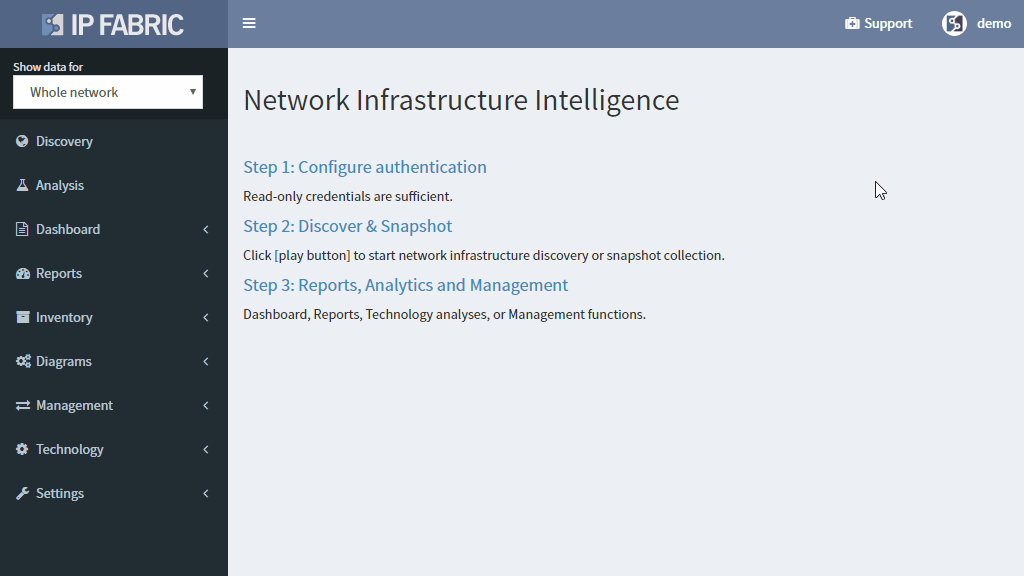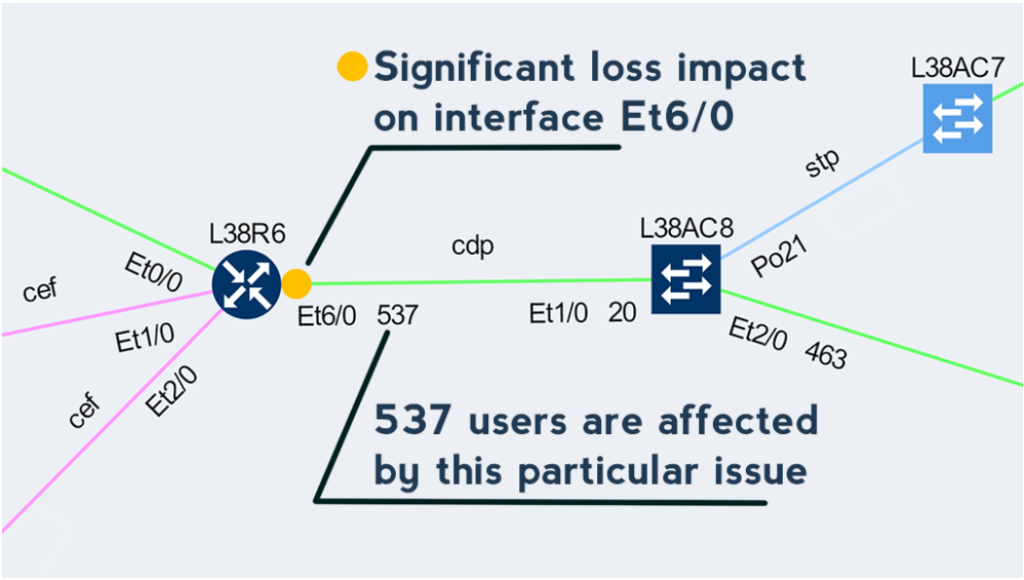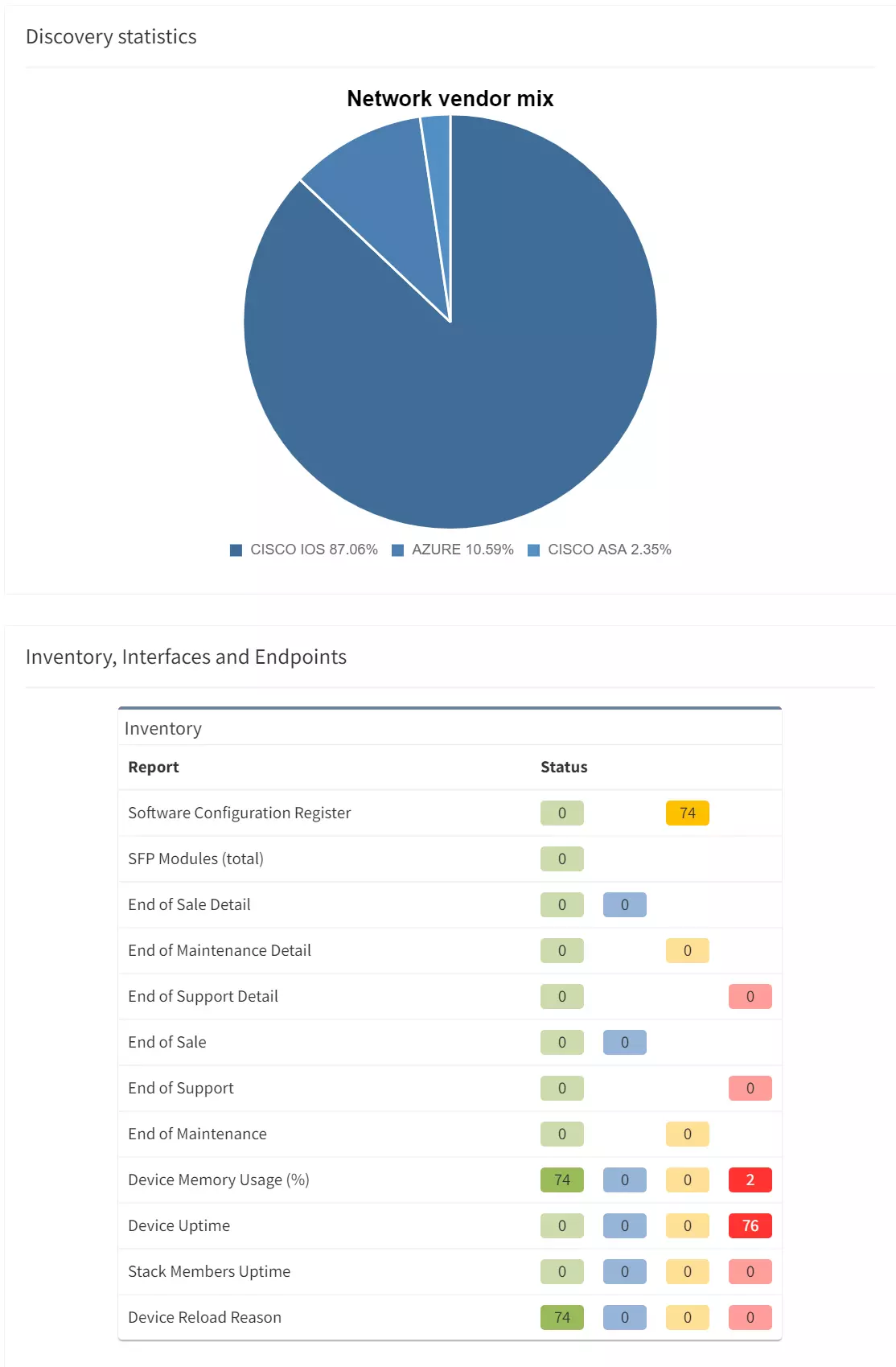

Network loss is one of the key performance indicators and is used throughout the networking industry for performance evaluations. But how do you evaluate loss network-wide?

Monitoring loss in a specific flow or service is precise but has a number of inherent disadvantages, such as that it must be explicitly provisioned, that the resulting measurement only tells information about a single service path, and that there is no specific information of where the loss occurred or what caused it.
Interface packet counters can provide this information, as they already record every single packet loss, including the specific reason for the loss. However, counters report a loss for a specific element, and high dropping element might be a mirroring port or a port connecting a misbehaving printer, with little impact to production. Surely you’ll want to know about those issues as well, but a significant loss on an uplink interface serving thousands of users is going to have much higher business productivity impact.
The IP Fabric platform combines these approaches, providing loss impact visibility at every point in the network from deltas of the packet counters, and then determining the significance of each issue by calculating the number of affected users.

This approach enables to quickly prioritize issues affecting business productivity the most, and at the same time pinpoint the exact location and cause of the issue, providing a clear path to remediation.
If you have found this article resourceful, please follow our company’s LinkedIn or Blog. There will be more content emerging. Furthermore, if you would like to test our platform to observe how it can assist you in more efficiently managing your network, please write us through our web page www.ipfabric.io
Network loss is one of the key performance indicators and is used throughout the networking industry for performance evaluations. But how do you evaluate loss network-wide?

Monitoring loss in a specific flow or service is precise but has a number of inherent disadvantages, such as that it must be explicitly provisioned, that the resulting measurement only tells information about a single service path, and that there is no specific information of where the loss occurred or what caused it.
Interface packet counters can provide this information, as they already record every single packet loss, including the specific reason for the loss. However, counters report a loss for a specific element, and high dropping element might be a mirroring port or a port connecting a misbehaving printer, with little impact to production. Surely you’ll want to know about those issues as well, but a significant loss on an uplink interface serving thousands of users is going to have much higher business productivity impact.
The IP Fabric platform combines these approaches, providing loss impact visibility at every point in the network from deltas of the packet counters, and then determining the significance of each issue by calculating the number of affected users.

This approach enables to quickly prioritize issues affecting business productivity the most, and at the same time pinpoint the exact location and cause of the issue, providing a clear path to remediation.
If you have found this article resourceful, please follow our company’s LinkedIn or Blog. There will be more content emerging. Furthermore, if you would like to test our platform to observe how it can assist you in more efficiently managing your network, please write us through our web page www.ipfabric.io




